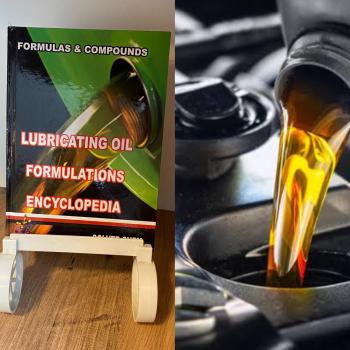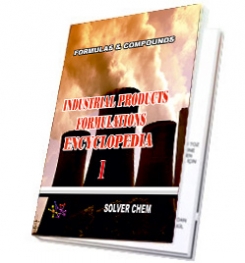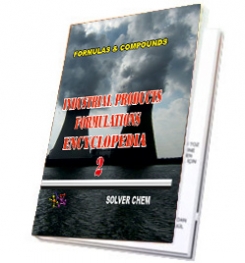
Proper fluid maintenance and change-out procedures
With literally thousands of uses for heat transfer fluids, it is nearly impossible for any heat transfer fluid manufacturer to recommend an exact oil change interval or maintenance schedule. Each application has its own unique characteristics that can contribute to the degradation of a heat transfer fluid. As well, each heat transfer fluid will react differently in different user environments. To give an example of the extremes, the same heat transfer fluid used in a PVC extruder may have a life cycle as short as a few months, while that same fluid in a larger 'closed' system can last upwards of 10 to 15 years! To begin, we should understand the two basic ways in which a heat transfer fluid can become degraded.

Oxidative (most common in open systems)
The scientific definition of oxidative degradation is the reaction of oxygen (in air) with the fluid by a free radical mechanism to form larger molecules which end up as polymers or solids. These thicken the fluid, increasing its viscosity. A more viscous fluid will be more difficult to pump, and have poorer heat transfer characteristics as well as an increased chance of coke formation.
Oxidation is also accompanied by an increase in the acidity (Total Acid Number, or TAN) of the fluid.
As with most chemical reactions, oxidation occurs more rapidly as the temperature is increased. At room temperature, the reaction rate is hardly measurable. However, at elevated temperatures, the effect is exponential and can impact the fluid life in systems not utilizing measures to reduce oxidation. These measures would include blanketing the expansion tank with nitrogen.
Oxidation occurs when hot fluid comes into contact with air. Signs of fluid oxidation are seen most clearly as sludge formation within the system, especially in low flow areas such as reservoirs or expansion tanks.
Thermal degradation
Thermal degradation, or thermal cracking, is the breaking of carbon - carbon bonds in the fluid molecules by heat to form smaller fragments which are free radicals. The reaction may either stop at that point, in which case smaller molecules than previously existed are formed, or the fragments may react with each other to form polymeric molecules larger than previously existed in the fluid. In heat transfer terminology, the two types of degradation products are known as "low boilers" and "high boilers".
If thermal degradation occurs at extremely high temperatures, the effect is not only to break carbon - carbon bonds but to separate hydrogen atoms from carbon atoms and form coke. In this case, fouling of the heat transfer surfaces is very rapid and the system will soon cease to operate.
Low boilers decrease the flash point and viscosity of the fluid and increase its vapor pressure. High boilers increase the viscosity of the fluid as long as they remain in solution. However, once their solubility limit is exceeded, they begin to form solids which can foul the heat transfer surfaces.
In layman’s terms, thermal degradation is overheating the oil past its boiling point. As the fluid boils, much like water, it produces a lighter component in the form of vapors. Excessive overheating or cracking can cause reduced viscosity, as well as pose safety concerns with the creation of the lighter components. This, in turn, reduces the overall flash point, fire point and auto-ignition temperatures.
Now that we understand how a fluid can break down, we can now break heat transfer systems down into two rudimentary types, open and closed.

Open systems
An open system will have oil coming in contact with air at some point in the system; this may be at the bulk operating temperature or may be at a lower temperature. However, if the oil temperature is not well below 200°F when it contacts air, this is considered an open system and susceptible to oxidation. These systems tend to be smaller and used in manufacturing processes in the plastic, die cast and other industries that utilize portable, electrically heated‘oil heaters’.
Open systems tend to run at temperatures well below the maximum recommended bulk temperature of a fluid (usually under 600°F, or 315°C). While this usually eliminates the potential for thermal breakdown, open systems are still most susceptible to oxidation.
Severe oxidation can, in extreme situations, shorten a fluid life to a number of hours. It is crucial to understand your system's design and how it incorporates protection from oxidation. Equipment manufacturers often use heat exchangers to cool oil prior to its exposure to air, or bypass valves set on timers to help venting at startup but close to reduce oxidation levels after a desired temperature is reached. If these systems fail to operate properly the oil life can, and most likely will, be shortened.
As a fluid oxidizes, it forms an acid. These acids, while generally not at corrosive levels, can build and eventually polymerize (drop out) of the fluid in the form of heavy, grease like sludges.
Again, fluid analysis is your best maintenance tool. When first using a heat transfer fluid in an open system, fluids should be monitored regularly to understand how often a particular system requires fluid changes. While manufacturers of equipment can provide guidelines as to the life expectancy of a fluid, not all fluids are made equal. Simple differences in operating environments and temperatures can impact oil life. The only way to know how often your fluid should be changed is through analysis.
Once you establish a maintenance schedule it is important to understand how to efficiently and effectively remove all the spent fluid prior to refilling. A fluid that has degraded contains an acidic compound that when left to mix with new fluid will increase the rate of degradation.
Smaller, open type equipment contains numerous areas where fluid can become trapped. Areas like heat exchangers, filter housings, horizontal piping and others should be examined for residual fluid. Blowing air or nitrogen through lines will often help remove old oil. If this is not possible, most fluid manufacturers have a light, economical flushing agent that can be used to flush out residual fluid.
Maintaining your fluid change-out schedule will keep equipment clean and running at peak efficiency.
Neglecting maintenance schedules can be problematic and can ultimately cause complete failure.
Closed systems
A closed system will have an inert gas buffer (usually nitrogen) between any point of contact of the oil to the atmosphere. These systems are typically larger and will generally be heated by a gas or oil-fueled boiler. This inert buffer will generally eliminate most of the concern for oxidation. Please note that some boiler manufacturers have developed expansion tanks that through proprietary plumbing effectively eliminate the potentiality for hot oil to come into contact with the atmosphere. For all intents and purposes, these can also be considered closed loop.
Now let's discuss the maintenance aspect of heat transfer fluids. As noted above, most closed systems, if operated properly, should not have a major concern for fluid degradation. Typically the systems are not run above the recommended bulk or skin temperature of the fluid, nor is oxidation of great concern due to the use of an inert gas blanket.
However, due to factors beyond one's control such as power or pump failure or inadvertent changes to a system (partially open or closed valves, decommissioning user loops etc.), these systems can experience thermal degradation, often unknown to the user on a day-to-day basis.
First order of maintenance for any system is to consult your fluid vendor and equipment manufacturer before making any changes to your system. A proper system is engineered around the user's needs and fluid. While most fluids are in the same range with respect to physical properties, changes in a system design or function can negatively impact a fluid.
Second order of maintenance is to follow a recommended fluid analysis program (usually available free or for a nominal fee from your vendor). These analyses allow early detection of any changes to a fluid allowing time for system corrections (to stop the fluid degradation) and often improve the fluid’s condition.
Fluid changing in closed loop systems is usually infrequent and measured in years. However, there will be a time when changing a system’s fluid will be required. This can often involve multiple steps including, in some cases, the use of a cleaning fluid and/or flushing fluid.
It is always best to understand the condition of your fluid and system prior to changing fluids (either to a different fluid or the same fluid). A fluid analysis is critical at this point, as is a general inspection of the system itself. This will involve looking for leaks and, if possible, inspecting the inside of the pipes and boiler.
Changing a fluid requires multiple considerations and is best discussed with your fluid vendor prior to change. However, the most important step is the complete (at least 95%) removal of all traces of the previous fluid. Degraded fluid will quickly contaminate new fluid.
heat transfer fluid,
LUBRICATING
OİLS
FORMULATIONS
ENCYCLOPEDİA
is enough.
This encyclopedia has many formulas about diesel engine oils, gasoline engine oils,gear oils,heat transfer fluid,grease oils,brake fluids,tractor oils,motorcycles oils,transmission oils,monograde motor oils,multigrade engine oils,full synthetic engine oils,semi synthetic oils,turbine fluids,industrial oils, etc.
All lubricanting oils in the encyclopedia are producible easily.You need no help and no technıcal support. The encyclopedia is enough to produce different engine oils itself.
LUBRICATING
OILS
FORMULATIONS
ENCYCLOPEDIA
is written clear and understandable.
RELATED TAGS: What is heat transfer oils, properties of engine oils,diesel engine oils,gasoline engine oils,how to use heat transfer fluid,types of heat transfer oils,making heat transfer fluids,analysis of heat transfer fluid,specification of heat transfer fluids,manufacturing heat transfer oils,high temperature heat transfer fluids,change of heat transfer oils,how to make heat transfer oils,making heat transfer fluid,composition of heat transfer oils,compounds of heat transfer fluids,where to use heat transfer fluids,application of heat transfer fluids,production of heat transfer fluids,heat transfer fluid msds,heat transfer fluid comparison,silicone heat transfer fluis,using of heat transfer fluids.


OPPORTUNITIES
1 ENCYCLOPEDIA 165 $
2 ENCYCLOPEDIAS 300 $
ORDER NOW
MOTOR OİLS ENCYCLOPEDIAS AND VIDEOS
SOLVER CHEM

|
|

|
|

|
|
